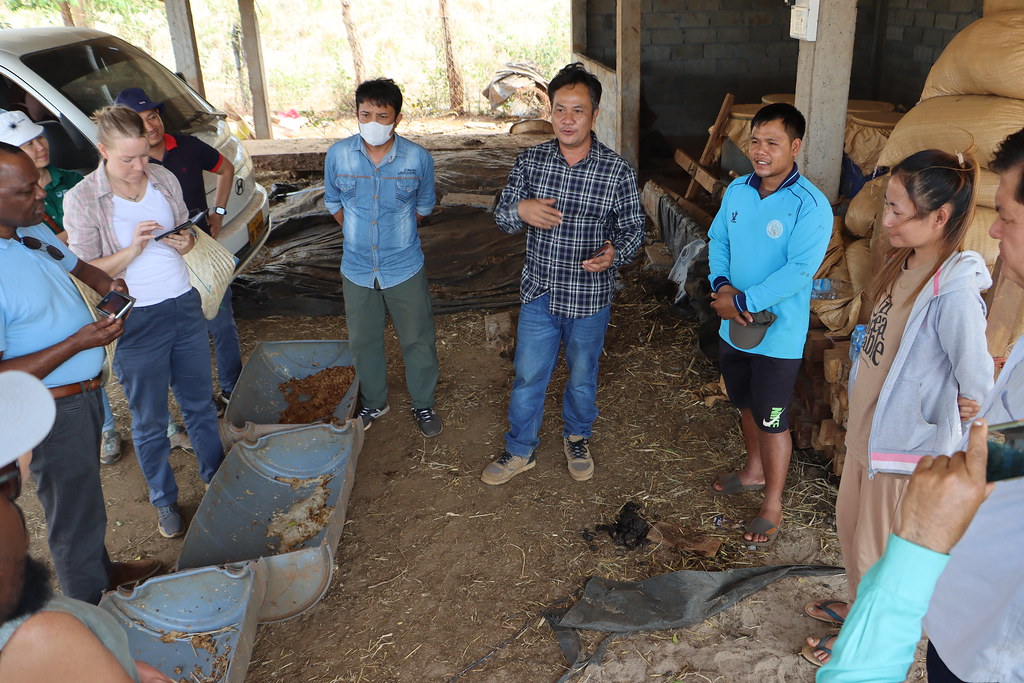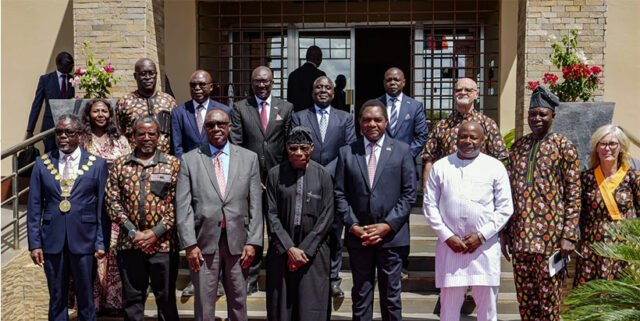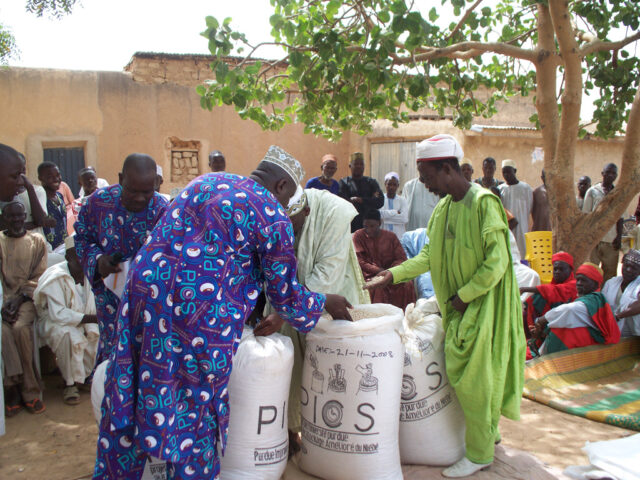
The CGIAR Initiative on Mixed Farming Systems held an inception and planning meeting in Vientiane, Lao PDR on March 20, 2023. The meeting brought together scientists from seven CGIAR centers and various stakeholders from Lao PDR, including policymakers, researchers from the National Agriculture and Forestry Research Institute (NAFRI) and international organizations based in Laos. The goal of the meeting was to discuss the challenges and opportunities presented by mixed farming systems in Lao PDR and to develop a plan for future collaboration.
The meeting was opened by Dr. Chay Bounphanousay, Director General of NAFRI, who welcomed the participants from all around the world that attended the meeting. She said: “Today is a good step in charting the course of collaboration between CGIAR and other stakeholders in Lao PDR in our joint effort to improve the livelihoods of the rural population, food security, and minimize the environmental impact of agriculture”. Afterwards Dr. Jonathan Newby, Cassava Program Leader of the Alliance of Bioversity and CIAT, and CGIAR County Convener for Lao, pointed out: “The Mixed Farming Systems Initiative can deliver critical outcomes that result in multiple impacts at scale, minimize sectoral trade-offs and leverage/maximize synergies in mixed farming systems”.
Dr. Newby continued with a brief introduction to Lao’s context, including why Lao was selected, a pathway of intended positive impacts that will be achieved; persistent and emerging challenges that the Initiative may address, and he set the stage for the discussion that followed. After that, NAFRI researchers shared details of ongoing research in Lao, including on crops like cassava and maize, forestry, silvopastoral systems, livestock systems and forages. They also discussed the importance of engaging with local communities and adapting farming practices to meet the needs of different regions.
Also speaking during the opening session of the meeting, Initiative Lead, Prof. Mateete Bekunda appreciated the perspectives of the Lao PDR national partners pointing out that these provided an important foundation for how the Initiative will be implemented in the country. This approach, he noted, was fundamental to how the Mixed Farming Initiative approached its work in Bangladesh, Ethiopia, Ghana, Malawi, and Nepal. Prof. Bekunda also welcomed feedback from various Lao PDR partners who highlighted possible entry points for the Initiative in the country. Bekunda called for agile implementation and translation of the plans into activities that will ensure the Initiative achieves its targets for smallholders as set out in the proposal.

CGIAR partners also shared the highlights of a scoping study which was jointly conducted in the provinces of Xiengkhouang (north), Salavan and Xekong (south): to identify the status , system drivers, constraints and opportunities for sustainable intensification of mixed crop-tree-livestock systems in the target MFS sites. Four major systems for intervention were identified in scoping study: (i) cassava-based systems, (ii) maize-based systems, (iii) silvopastoral systems, and (iv) livestock systems. Researchers from the Alliance of Bioversity andCIAT, the International Maize and Wheat Improvement Center (CIMMYT) and the International Livestock Research Institute (ILRI) complemented the discussion by presenting the interventions and investments from past projects in the country that would add value to the MFS Initiative work. These included entry points for different systems, innovations proposed for the hubs, and synergies with ongoing projects including ‘Disease-resilient and sustainable cassava production systems in the Mekong region,’ which is funded by the Australian Government through the Australian Centre for International Agricultural Research (ACIAR).
To enable a better understanding of the global initiative design and how it translates to implementation in Lao PDR, world café discussions were held giving an opportunity for all stakeholders present to tease out specific issues of interest and concern. The world café discussions were organized around the Initiative’s fives work packages (WP) and four cross-cutting work streams, namely: WP1- status, trends and future dynamics; WP2- building methods and tools for sustainable intensification; WP3- participatory co-design with evidence-based and validated innovation packages; WP4- scaling of innovations and WP5-capacity building. The cross-cutting work streams were on gender, communications, scaling readiness and Monitoring, Evaluation, Learning, and Impact Assessment (MELIA) to strengthen the delivery of the proposed outcomes.

Role of Stakeholders
One of the key themes that emerged from the meeting was the importance of involving different stakeholders in co-creation and implementation of the initiative. Policymakers, farmers, and researchers all have a role to play in promoting sustainable agriculture in Lao PDR, and their input was crucial to the success of the meeting. By bringing together a diverse group of stakeholders, the Initiative team gained a better understanding of the challenges and opportunities presented by mixed farming systems. These will inform the development of a comprehensive plan for future action.
Challenges and Opportunities
Mixed farming systems present both challenges and opportunities in Lao PDR. On one hand, they offer a way for farmers to diversify their income streams and increase their resilience in the face of changing weather patterns and market conditions. On the other hand, they require careful management of resources and a deep understanding of the complex interplay between crops and livestock.

After the workshop, a field trip to the southern hub of the country allowed participants to learn and share their experiences with mixed farming systems, highlighting the unique characteristics of the region and the strategies that must be developed to overcome specific challenges. For example, the cassava boom that is making more and more farmers shift to cassava due to the increasing demand for its starch to export to Thailand makes an imperative case to address issues in cassava production and technical skills for smallholders that are venturing in this cash crop. Similarly for livestock production. China and Vietnam are big potential markets for Lao’s livestock, but productivity and technology should be improved to effectively meet the growing demands.
Lessons Learned
The inception meeting provided a valuable opportunity for attendees to share their experiences and insights, and to develop a more coordinated approach to promoting sustainable agriculture in Lao PDR. Some of the key takeaways from the meeting included:
- The importance of engaging with local communities and tailoring farming practices to meet their needs.
- The need for more research on the ecological and economic impacts of mixed farming systems.
- The value of sharing knowledge and best practices among different regions and stakeholders.
Looking ahead, the CGIAR Initiative on Mixed Farming Systems plans to continue its work in Lao PDR and expand its collaboration with other organizations and initiatives around the world. By building on the insights and lessons learned from the inception meeting, the initiative will develop more effective strategies for promoting sustainable agriculture and improving livelihoods in Lao PDR and beyond.



